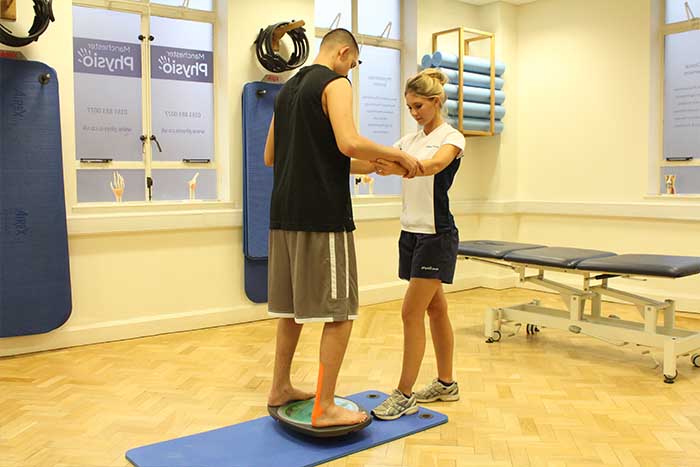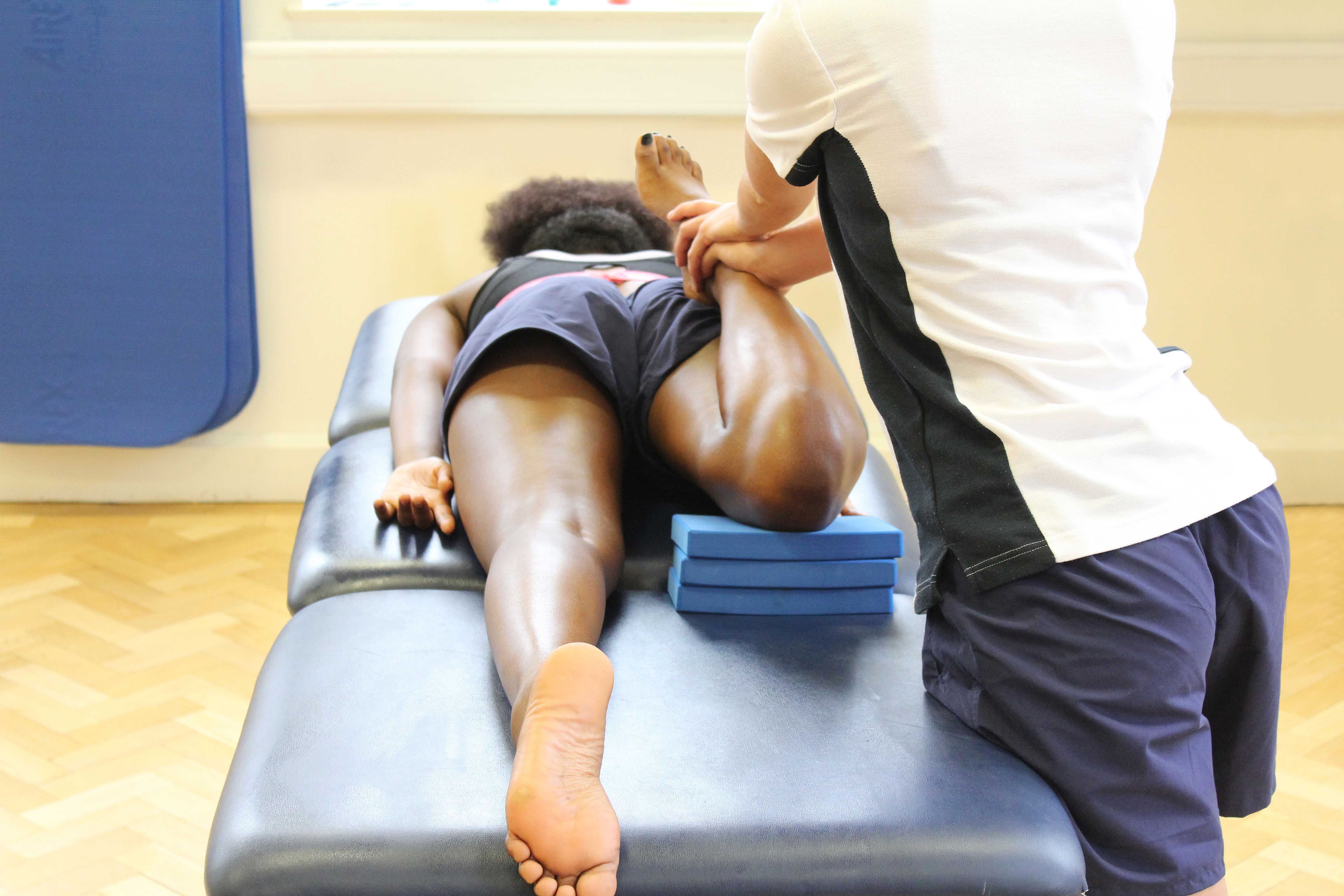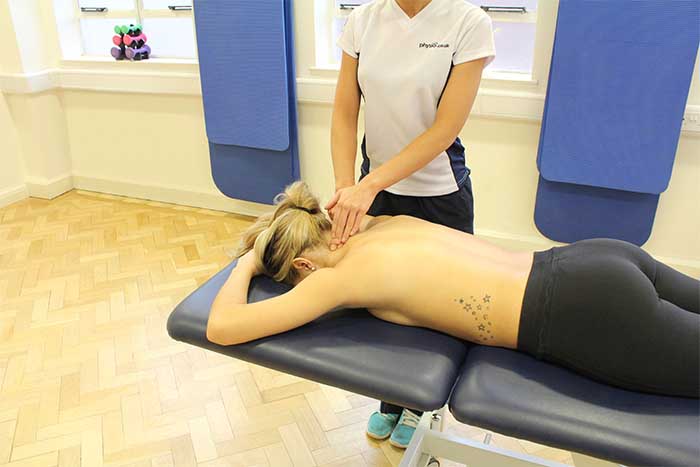What is massage for musculoskeletal disorders?
The term musculoskeletal disorders covers a broad range of disorders which affect joints and soft tissues such as muscles, ligaments, tendons and nerves. Common symptoms which may be experienced alongside a musculoskeletal disorder are pain, stiffness and limited range of movement. Musculoskeletal disorders have a range of causes, some of them being age, occupation, activity level and lifestyle. Other causes associated with musculoskeletal disorders involve the wear and tear of daily activities and through direct traumas to the area through jerking movements, direct impact and falls.

When can massage help musculoskeletal disorders?
Massage therapy can be applied to an individual with a musculoskeletal disorder in a range of different situations such as;
 Above: Massage can help in the management and treatment of long term musculoskeletal conditions.
Above: Massage can help in the management and treatment of long term musculoskeletal conditions.Massage therapy can be used to treat chronic pain caused by the musculoskeletal disorder. Chronic pain refers to pain that has been present for longer than 6 months. Chronic pain is common within musculoskeletal disorders due to the effects on the musculoskeletal system. Massage can be extremely beneficial when applied during the presence of chronic pain as the massage can target both the pain and the psychological stress associated with chronic pain. Massage can achieve a reduction in pain through increasing endorphin release and blood circulation.
Massage therapy can be used as part of an individual's training programme. It is important to constantly maintain and improve muscle performance, this can be achieved through massage with the application of moderate to deep massage techniques. The application of massage can help to reduce muscle tension, fascia tension and scar tissue all of which can assist in improved muscle flexibility and injury prevention.
Massage therapy can be extremely beneficial following a surgical procedure. When surgery is performed an accumulation of scar tissue will be formed in the surrounding areas due to the distress caused. The formation of scar tissue is unavoidable as it is part of the healing process, if left untreated, scar tissue can become adhesive and limit the performance and flexibility of muscles which can cause pain. A range of massage techniques which vary in stroke depth, direction and rhythm can achieve a number of benefits. The benefits of massage post-surgery include a reduction in swelling, increased healing and reduced scar tissue.
Massage therapy can be used for stress which is common when dealing with a musculoskeletal disorder. If stress is left untreated it could lead to depression. Using gentle massage techniques the patient can experience an immediate reduction in stress and increased positive feelings. A reduction in stress is achieved by stimulating the autonomic nervous system which regulates emotional mood and hormone release.
Massage therapy can be used to relieve tightness within muscles, which is often associated with musculoskeletal disorders. When the human body becomes injured it is common for surrounding muscles to become tight in an attempt to relieve the stress on the injury site. Muscular tightness can cause pain and limit range of motion. Massage can be used to relieve those tight muscles using moderate to deep massage techniques. Massage can relieve muscular tightness by increasing blood circulation, tissue temperature and tissue elasticity.
What are the physiological effects of a massage for musculoskeletal disorders?
The application of massage can produce a number of physiological effects to an individual with a musculoskeletal disorder. The physiological effects of massage include;
Massage can produce an increase in cellular exchange. Cellular exchange refers to the process of delivering essential nutrients such as oxygen and removing waste products from tissues. An increase in cellular exchange is achieved through increasing blood circulation meaning nutrients are readily delivered to tissues and waste products are removed efficiently. An increase in cellular exchange can help maximise performance and maintain healthy muscles.
Massage can decrease cortisol. Cortisol is a stress related hormone released when the hypothalamus within the brain detects a threat. Low levels of cortisol can enable the individual to feel alert, observant and aware. Prolonged periods of high cortisol levels can lead the individual to feel anxious, stressed and depressed. Massage can promote relaxation and enable the individual to feel calm, therefore reducing the release of cortisol.
Massage can breakdown/realign collagen fibres. When an injury occurs the body lays down collagen fibres in a disorganised fashion. Disorganised collagen fibres can lead the tissue to become painful, tight, and a reduction in range of movement may be observed. Massage can breakdown the adhesive fibre connections and realign collagen fibres into a more functional orientation. Massage can realign collagen fibres into a parallel fashion in line with longitudinal stress. The breakdown/realignment of collagen fibres can result in an increase in performance and range of movement and a decrease in pain.

What are the benefits of a massage for musculoskeletal disorders?
Massage can produce a number of significant benefits for an individual suffering from a musculoskeletal disorder such as;
Massage therapy can be used to decrease the pain felt due to a musculoskeletal condition. The decrease in pain felt can be achieved through multiple mechanisms such as the increase in tissue temperature, the removal of waste products and through the pain gate theory. Massage can decrease pain through increasing tissue temperature through stimulating blood circulation via vasodilation. Massage can decrease pain through increasing the removal of waste products this is achieved through stimulating an increase in blood circulation and capillarisation. Massage can decrease pain through the pain gate theory, which refers to a process where the application of massage interferes with the body's pain signal pathways.
Massage therapy can improve the range of movement. Limited range of movement can be both frustrating and life limiting. If left untreated limited range of movement can lead to depression, muscular tightness, limited performance, and an increased risk of further injury. Massage can improve range of movement by increasing blood circulation and decreasing scar tissue. Massage can be used to produce an increase in blood circulation and vasodilatation which enables blood containing oxygen and nutrients to circulate the injured area. An increase in blood circulation produces an increase in tissue temperature which allows the tissue to relax and become more pliable. Massage can increase range of movement by decreasing scar tissue. A reduction in scar tissue is achieved through applying compressive forces which can breakdown adhesive collagen fibre connections.
The application of gentle massage therapy can enable the individual to improve relaxation. Relaxation is achieved through multiple mechanisms such as a release in endorphins and a decrease in pain and tension. Massage can promote relaxation through increasing the release of endorphins, through stimulating the autonomic nervous system. An increase in the release of endorphins can leave the individual feeling happy, calm and motivated. Massage can improve relaxation through decreasing muscular tension, this is achieved through increasing tissue temperature which allows the muscles to relax.
Massage therapy can increase the flexibility of muscles through increasing the temperature of the tissue and decreasing scar tissue. Massage can increase tissue temperature through increasing blood circulation via vasodilation. An increase in temperature allows the muscles to relax and increase in flexibility and elasticity. Massage can increase tissue flexibility through decreasing scar tissue. Scar tissue is made of adhesive collagen fibres laid down in a disorganised format. Massage can break up the adhesive connection within the collagen fibres and help realign them into a functional fashion.
Massage therapy can increase healing during musculoskeletal disorders through increasing blood circulation and cellular exchange. Massage can increase healing by increasing blood circulation which can increase the chance of the body's natural repair cells coming into contact with the injury site. Massage can also increase healing by increasing cellular exchange, in particular the removal of waste products, toxins and damaged cells from tissues. An increase in cellular exchange is achieved through increasing blood circulation and capillarisation.
Summary
The therapists at Physio.co.uk can use a range of massage techniques to benefit an individual suffering from a musculoskeletal disorder. Situations where massage would be extremely beneficial include during chronic pain, as part of a training programme, post-surgery, during stress and tight muscles. The application of massage can produce a number of physiological effects such as increased cellular exchange, decreased cortisol and the breakdown/realignment of collagen fibres. The application of massage strokes which vary in direction, rhythm and pressure can produce a number of benefits. The benefits of massage include a decrease in pain, increased range of movement, relaxation, flexibility and healing.
How can I arrange a massage to help musculoskeletal disorders?
To arrange a massage to help musculoskeletal disorders at Physio.co.uk, email us at office@physio.co.uk or call us on 0161 883 0077.
You can also book an appointment online and save £10.

 0330 088 7800
0330 088 7800



































